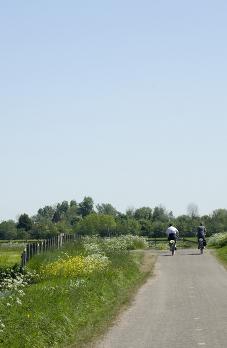Biodiversity Hoeksche Waard, vision creation
| Function / Domain: | Biodiversity, recreation, agriculture, water management, nature development |
| Illustration of: | Process of vision creation |
Biodiversity, our natural capital, is deteriorating rapidly as a result of climate change, urbanisation, the destruction of rain forest, monoculture practices and the use of pesticides. Many people's livelihoods are at stake. In 1992 187 countries concluded a Convention on Biological Diversity obliging signatories to ensure the conservation and sustainable use of genes, species and terrestrial, aquatic and aerial ecosystems. The government in the Netherlands went on to formulate a national policy. In keeping with this was the biodiversity project of the Dutch Environment ministry and the province of Zuid-Holland for the Hoeksche Waard, an island south of Rotterdam. The ambition was also to involve citizens in policy.
Vision creation from within the projects
Unlike many other vision creation projects, the vision arose from the bottom up based on concrete ideas for projects. A brief description of the process is given below.
Preliminaries
In a preliminary phase from December 2003 to March 2004 the project leaders familiarised themselves with the contents of biodiversity policy. Through the focus group they got in touch with organisations and the local media and they planned a launch meeting in late March 2004 with around 70 participants, among them citizens.
Initial meeting and working groups
The next step was to think of and work out projects in project groups (May-September 2004). This was followed by a first meeting. At this stage already initial ideas for projects were mentioned. The organisers gathered together and circulated these ideas among the participants. The working groups then set to work. They were organised by themes which the organisers had picked out from their earlier research: living, working, water, fish and water management, recreation, nature, fruit growing, agriculture and communication. These groups worked out the initial and fresh ideas using a project format which included questions about implementers and costs. This produced 28 project proposals.
Discussion
The project proposals were presented and discussed in a second meeting with all the participants. A poll with stickers made it clear which projects had the greatest appeal. The working groups went ahead with the most appealing projects and they were brought together in a draft report.
Overall vision
Only then was the move made to a vision of the entire area: a picture of the Hoeksche Waard with biodiversity that is finely meshed with the physical environment in the form of ditches, verges, river and field banks. The vision emerged from the various specific project proposals and was compiled by the organisers. Through the vision the organisers provided the projects with an overall, coherent framework.
Final conference
The vision and the project proposals were presented to the state secretary of the Dutch Environment ministry and the members of the Provincial Executive at a final conference in October 2004. Since then a number of different project proposals have been implemented. The entire process is described in the final report and a process report (see below).
Sources
(in Dutch)
- Biodiversiteit Hoeksche Waard. Voor en door burgers, Eindrapport (2004). NovioConsult, in samenwerking met diverse organisaties in en bewoners van de Hoeksche Waard en de provincie Zuid-Holland: Nijmegen.
- Biodiversiteit Hoekse Waard, Procesverslag (2005). Project ‘Biodiversiteit Hoeksche Waard voor en door Burgers'. NovioConsult: Nijmegen
